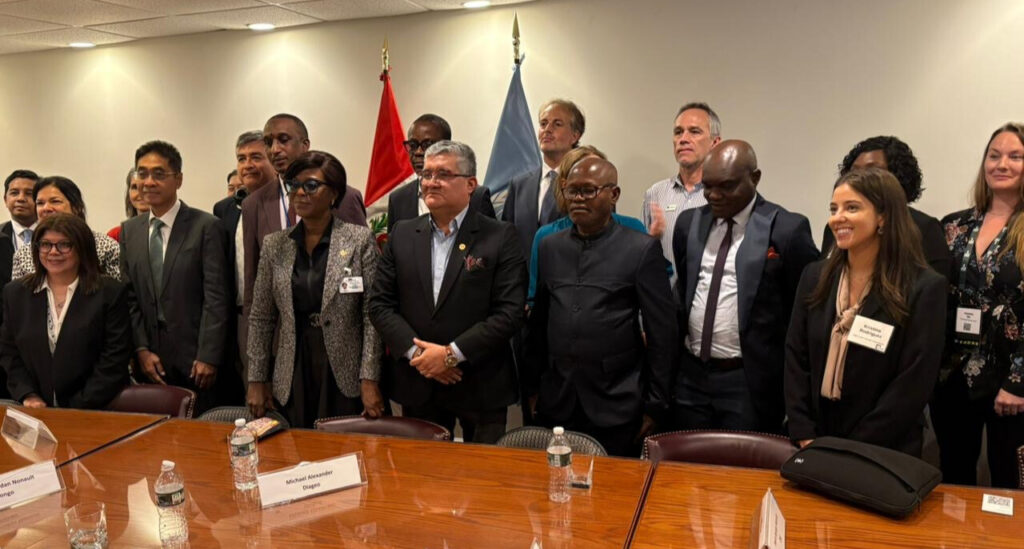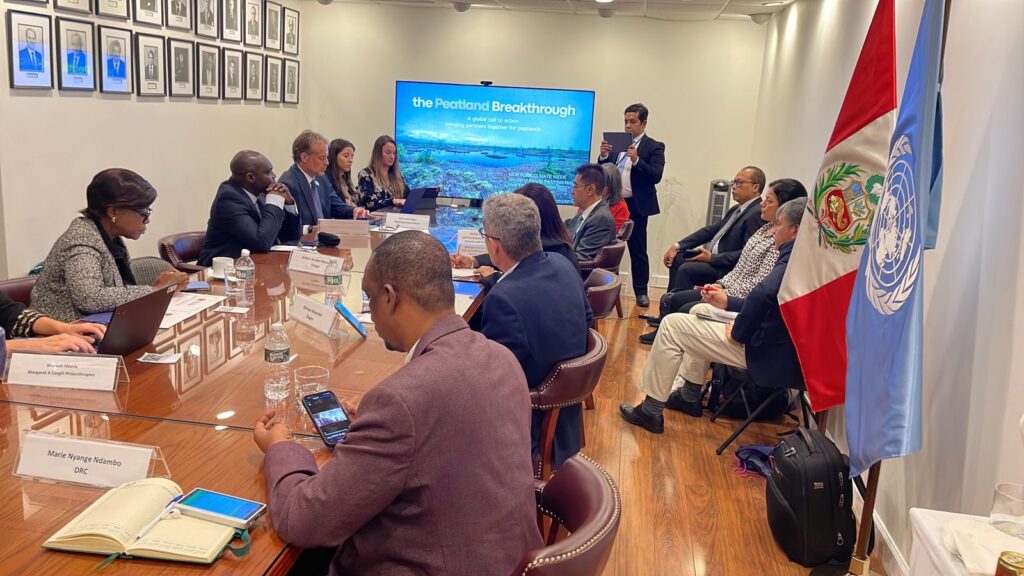
Momentum building for the Peatland Breakthrough at New York Climate Week
During New York Climate Week 2025, governments, donors, international organisations, and the private sector, gathered for an exclusive high-level meeting hosted by the Government of Peru and partners of the Peatland Breakthrough. The meeting was a pivotal opportunity to mobilise broad support and strengthen partnerships to drive the Peatland Breakthrough forward, ensuring that peatlands are recognized as a key nature based solution for accelerating progress for the global climate agenda, while also contributing to biodiversity, water security, and sustainable livelihoods.
Peatland ecosystems hold unparalleled significance in combating climate change and achieving the goals of the Paris Agreement. They cover only 3% of global land surface but store up to one-third of the planet’s soil carbon, double the carbon found in the world’s forest biomass. Beyond their climate mitigation benefits, peatlands enhance community and ecosystem resilience by regulating water flows, reducing flood and drought risks, providing critical habitats for flora and fauna, supporting livelihoods, and enhancing water quality. In fact, the estimated global value of peatland ecosystem services is about USD 2.3 trillion.

Unfortunately, peatlands are being degraded in every part of the world. They are drained for agriculture and forestry, eroded by overgrazing of livestock, mined for fuel and horticulture, and polluted by human activity. Infrastructure development disturbs their hydrology and many are deliberately burned. When we lose peatlands as healthy thriving ecosystems, we not only lose their ability to capture carbon, but conversely, they release large amounts of greenhouse gases. Degraded peatlands currently emit about 4 % of all anthropogenic emissions. Conserving and sustainably managing peatlands and restoring degraded ones must therefore be prioritised to accelerate progress in tackling climate change.
The Peatland Breakthrough is a call-to-action that aspires to enable systemic changes to protect and restore peatlands on a large scale. By bringing together governments, the private sector, donors, and civil society, the Breakthrough aims to help accelerate conservation, restoration, and sustainable and wise use of peatlands worldwide, guided by robust science-based targets and principles.
The meeting brought together potential Champion Countries and strategic partners to learn more about the Peatland Breakthrough, explore how they could contribute, and understand the benefits of engaging with this new climate breakthrough, both in the lead-up to its official launch and throughout its implementation. The event was hosted by Juan Carlos Castro Vargas, Minister of Environment of Peru, who emphasized Peru’s role as the first Champion Country of the Peatland Breakthrough.

Arlette Soudan-Nonault, Minister for the Environment, Sustainable Development and the Congo Basin, and Executive Secretary of the Congo Basin Climate Commission of the Republic of Congo, reaffirmed her country’s commitments to conserving the Congo Basin’s intact peatlands. She emphasized that conservation cannot be achieved without adequate financing for the energy transition and the country’s NDCs, which depend both on domestic resources and international support. In addition, high-level representatives from the Ministry of Environment and Sustainable Development of the Democratic Republic of the Congo, and the Ministry of Forestry of Indonesia presented their ongoing peatland programmes and shared the challenges they face, agreeing that the Peatland Breakthrough can help mobilize critical funding needed to meet their climate goals.Wetlands International, on behalf of the Peatland Breakthrough partners, introduced the Breakthrough and spoke on how the Peatland Breakthrough aims to drive change and deliver impact, and presented the draft global targets and guiding principles that will underpin collective action.
Potential donors and global partners learned more about Peatland Breakthrough and explored opportunities to contribute to advancing the global peatland and climate agendas altogether. Interventions included The Nature Conservancy, expressing willingness to support the process, and Diageo, sharing their peatland restoration work and ambition to scale it through the Peatland Breakthrough. Foundations such as the Gordon and Betty Moore Foundation and the Margaret A. Cargill Philanthropies also highlighted the philanthropic interest in advancing peatland action.
The UNFCCC Climate Champions reflected on the proven success of the Mangrove Breakthrough as an example of how science-based, collaborative initiatives can drive transformative global action.
UNEP reinforced the importance of the Peatland Breakthrough for achieving climate targets and its relevance to the Paris Agreement, ahead of its upcoming pre-launch and events at UNFCCC COP30. Leadership from governments and donors is essential to unlock the full potential of peatlands, and only by working together through collaboration can the Peatland Breakthrough succeed. UNEP shared the state of the world’s peatlands and progress made so far through collaborative efforts including the Global Peatlands Initiative and its Global Peatlands Assessment, emphasizing that peatlands are a cost-effective nature-based solution that cannot be overlooked. By working together to mobilize resources and champion peatlands action through a whole of society approach, we will make much needed progress toward our climate goals.
The Peatland Breakthrough is a global call to action led by Wetlands International, the United Nations Environment Programme, the Food and Agriculture Organization of the United Nations, the Greifswald Mire Centre, and the Landscape Finance Lab, developed in close alignment with the Global Peatlands Initiative, and in collaboration with the High-Level Climate Champions Team and the Convention on Wetlands.
Our growing list of supporting partners includes: the Global Environment Centre, RE-PEAT, and The Nature Conservancy.
